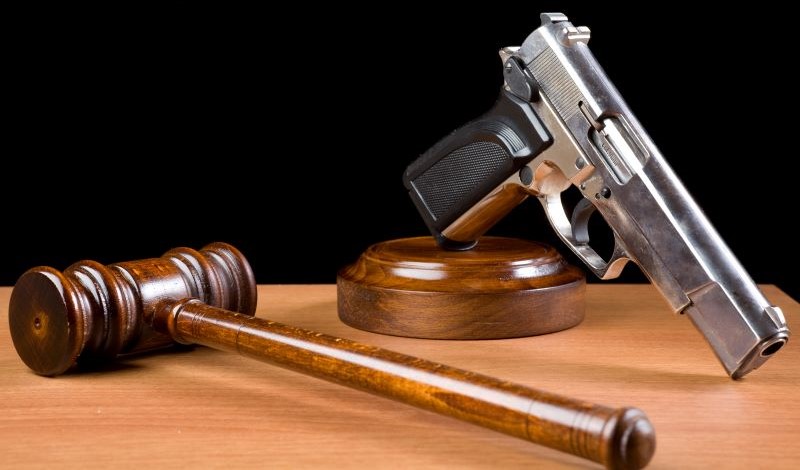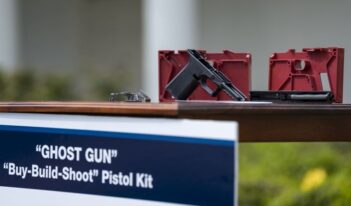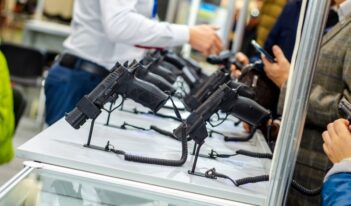
The Supreme Court weighs public safety concerns surrounding ghost guns in recent Second Amendment decision.
The U.S. Supreme Court heard oral argument in Bondi v. VanDerStok in October 2024. The case involved a challenge to the Biden Administration’s effort to subject gun assembly kits—colloquially known as ghost guns—to federal serialization and background-check requirements by issuing a rule that expanded the definition of “firearm” in the Gun Control Act to include the kits and their component parts.
Two individual gun owners and a gun-rights advocacy group challenged the ghost gun rule in court as beyond the statutory authority of the agency that issued it, the Bureau of Alcohol, Tobacco, Firearms and Explosives (ATF). They raised no constitutional claims, likely because courts have been generally unreceptive to the argument that the Second Amendment of the U.S. Constitution guards against restrictions on the right to acquire firearm parts for self-assembly.
In late March, the Supreme Court rejected the challenge and upheld the rule in a 7–2 decision by Justice Neil Gorsuch. Events that transpired between the October 2024 oral argument and the Court’s decision in March shed crucial light on the decision and the future of the ghost gun rule. VanDerStok represents a collision between gun rights and “law and order” politics—that is, a tough on crime approach emphasizing harsh punishment and active law enforcement—where public safety concerns prevail and visions of radical gun deregulation fade away.
President Donald J. Trump signaled during the 2024 campaign that he was preparing to roll back all manner of gun restrictions if elected. President Trump has long catered to gun-rights groups such as the National Rifle Association (NRA), promised to appoint judges with an expansive view of gun rights, and even suggested that gun-rights supporters might target political opponents on his behalf.
President Trump spoke at the NRA Convention in May 2024, declaring that “the NRA has stood with me from the very beginning” and that he would “stand strong” for NRA members’ “rights and liberties.” And President Trump warned that, “if the Biden regime gets four more years, they are coming for your guns.”
President Trump’s selection as running mate, Ohio Senator J.D. Vance, appeared to be cut from the same cloth. After Senator Vance’s selection, the NRA referred to Vance as a “true Second Amendment champion” with a history of introducing “resolutions of disapproval for overreaching gun control regulations.” In a 2021 column, the then-senatorial-candidate attacked the Biden Administration’s proposed ghost gun rule, calling it “the worst kind of political showmanship” because the law would “make it harder for law-abiding Ohioans to exercise their Second Amendment rights” and would not have “even a small effect on gun violence in our country.” Then-Senator Vance also implied in a tweet that the rule was unconstitutional, supported abolishing the ATF, and, in his convention speech accepting the vice presidential nomination, touted his grandmother’s “gun stash.”
After President Trump and Senator Vance prevailed in November, then, it seemed a foregone conclusion that many Biden Administration gun initiatives—including the ghost gun rule—were dead letter. Indeed, it would have been a relatively simple matter for the Trump Administration to begin the process of revoking the rule, or at least notify the Supreme Court that it was considering doing so.
This maneuver is neither unusual nor unprecedented under a new administration. For example, the first Trump Administration repealed the Clean Power Plan—a regulation issued by the U.S. Environmental Protection Agency under President Barack Obama—while litigation challenging the plan was pending before the U.S. Court of Appeals for the D.C. Circuit. Shortly after taking office again in January 2025, Trump issued an executive order directing Attorney General Pam Bondi to investigate and report on “any ongoing infringements of the Second Amendment rights of our citizens.” And the Administration rolled back some Biden-era firearm regulations, stopped defending other ATF restrictions, and even continued to attack the ghost gun rule in other contexts.
But President Trump never moved to eliminate the rule. The Court continued its deliberations in the ordinary course, and, in March, a seven-justice majority—which included the three justices appointed by President Trump—upheld the restriction.
I advance a straightforward explanation for the Trump Administration’s decision not to eliminate the rule: President Trump and his advisors support the rule because its public safety benefits outweigh any burden on lawful gun ownership. While President Trump was courting gun-rights groups on the campaign trail, he was also relentlessly pushing a “law and order” message and attacking President Biden for allegedly rising crime. President Trump suggested that American cities were crime-ridden and unsafe and that he alone could make them safe again.
On December 4, 2024, a gunman shot and killed UnitedHealthcare CEO Brian Thompson outside of a shareholder meeting in New York. Law enforcement subsequently arrested Luigi Mangione, who was in possession of a 3D-printed, self-manufactured firearm. Experts believe that Mangione—the accused killer and a technologically savvy engineer—manufactured the gun himself using a 3D printer and, possibly, blueprints available online.
President Trump called the shooting “just a cold-blooded horrible killing,” and Bondi subsequently directed federal prosecutors to seek the death penalty against Mangione as part of a larger push to pursue the death penalty more frequently in federal cases on public safety grounds. Here was clear-as-day evidence that untraceable ghost guns exacerbate crime: Criminals prefer such weapons to circumvent in-person controls and background checks, and they use ghost guns to commit murder and other violent offenses. Individuals prohibited from buying or possessing guns—such as convicted felons or minors—may be able to easily acquire gun parts online and assemble a working firearm. And, after they are used in criminal activity, ghost guns are exceedingly difficult for law enforcement to trace.
Following this visceral reminder of the dangers of ghost guns, the Administration chose to retain a common-sense regulation supported by over 65 percent of Republicans and Trump voters—though, surely, not by the most ardent gun-rights segment of the Trump camp. And public safety concerns surrounding ghost guns were evident in VanDerStok, with Justice Gorsuch writing that criminals find ghost guns attractive because they can be sold “without obtaining a federal license, conducting background checks, maintaining sales records, or marking components with serial numbers.”
Together with the Court’s recent decision in United States v. Rahimi and its endorsement of laws restricting gun possession by domestic abusers, VanDerStok appears to be an example of “law and order” policies and public safety concerns taking precedence over gun rights. The outcome suggests that President Trump’s campaign-trail gun rights rhetoric was something of a mirage—in his second term, President Trump may follow public sentiment and hew closer to the middle in terms of gun policy. That is a potentially fruitful place to be, as gun restrictions with broad support have often been blocked by small but vocal minorities.
This essay is part of a series, titled “The Supreme Court’s 2024-2025 Regulatory Term.”




